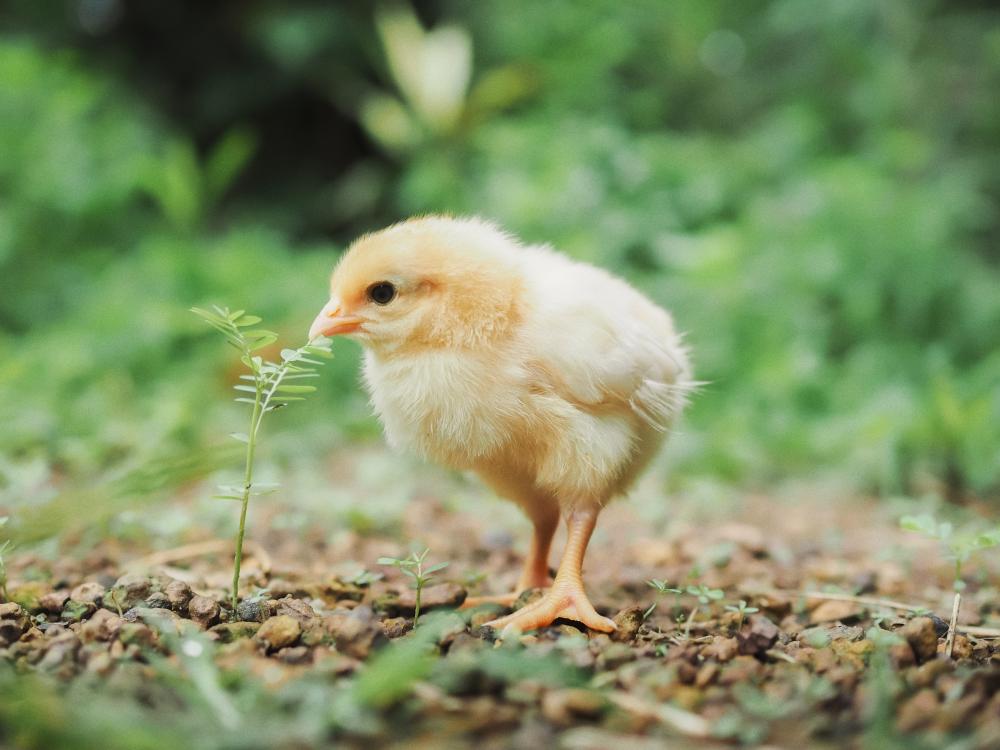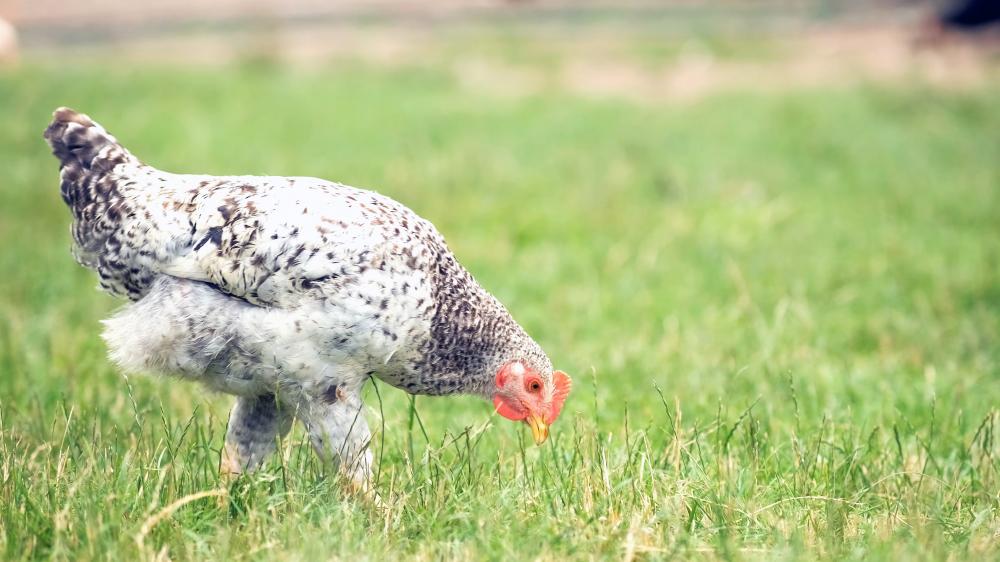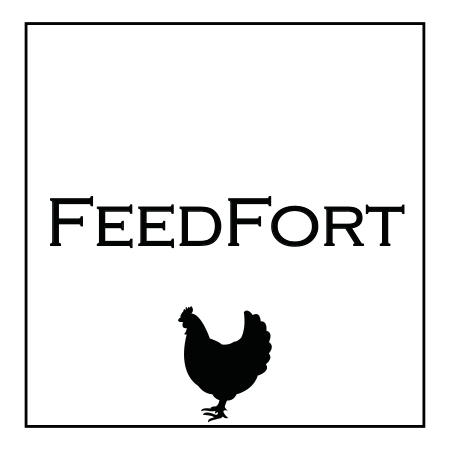Sustainable Chicken Feeding

Sustainable Chicken Feeding
Delving into the world of sustainable chicken feeding brings us closer to understanding how optimizing feed not only benefits our feathered friends but also impacts our environment positively. At FeedFort, we’re pioneering a shift towards more sustainable practices in poultry care, emphasizing the importance of securing feed against common adversaries like rodents, thus minimizing waste and promoting better health for chickens.
The Importance of Secure Feeding
Why Secure Your Chicken Feed?
Securing your chicken feed with solutions like FeedFort’s automatic feeder is crucial in the journey towards sustainable chicken feeding. Keeping rodents at bay is not just about safeguarding the feed; it’s about ensuring the health and well-being of your chickens. Diseases, mites, and spoilage are real threats that rodents bring along with them, making secure feed storage a top priority.
Benefits of Using an Automated Feeder
By integrating an automated feeder like FeedFort, you’re not just protecting the feed from pests. You’re also reducing spillage and waste, thanks to its slow descent feature. This not only saves money in the long run but also contributes to a more sustainable feeding practice by ensuring that your chickens get exactly what they need, with minimal waste.
Embracing Technology for Sustainability
In the quest for sustainable chicken feeding, embracing technology can offer a myriad of benefits. FeedFort utilizes photocell technology to process light, opening and closing the feeder accordingly. This innovative approach not only enhances feed security but also reduces the need for manual intervention, making your feeding routine more efficient and reliable.
Advantages of Sustainable Feeding
Sustainable Practices Lead to Healthier Chickens
One of the core benefits of sustainable chicken feeding is the positive impact on the health of the chickens. By ensuring that feed is fresh, secure, and free from contaminants, we’re paving the way for healthier flocks. Healthier chickens not only produce better yields, whether that’s in the form of eggs or meat, but they also require fewer interventions from medications or supplements, aligning with the principles of sustainable farming.
Environmental Impacts
Sustainable chicken feeding extends its benefits beyond the coop, contributing to broader environmental conservation efforts. Minimizing feed waste means less production demand on feed resources, and securing feed from pests reduces the risk of disease spread. Every small step towards sustainability in chicken feeding practices plays a part in the larger picture of ecological stewardship.
The FeedFort Difference
Choosing FeedFort as your partner in sustainable chicken feeding brings a multitude of benefits. Made from durable American-made 5052 Aluminum, our feeders are not just about durability; they are about contributing to a sustainable future. Our patent-pending technology ensures that your feed is protected around the clock, giving you peace of mind and significantly contributing to your sustainable farming goals.
Cost Savings and Sustainability
Sustainable practices often come with an upfront investment, but the long-term savings cannot be overstated. By reducing feed waste and protecting your flock from diseases carried by pests, you are ensuring a more cost-effective operation. Sustainable chicken feeding practices, like using an automated feeder, pay off by lowering operational costs over time, demonstrating that sustainability and economic viability can go hand in hand.
Optimizing Feed Efficiency
Understanding Feed Consumption
To truly embrace sustainable chicken feeding, understanding and optimizing feed consumption is essential. This involves not just the type of feed you provide but also how and when it’s delivered. The goal is to match your feeding practices with the natural behaviors and nutritional needs of your chickens, reducing waste and improving overall efficiency.
The Role of Innovation in Feed Management
Innovation plays a crucial role in optimizing feed efficiency. At FeedFort, we’re constantly seeking ways to improve our feeders, from the materials we use to the technology that powers them. This commitment to innovation not only supports sustainable chicken feeding but also ensures that we’re always at the forefront of providing solutions that meet the evolving needs of farmers and poultry enthusiasts alike.
Embrace Sustainable Chicken Feeding with FeedFort
As we journey towards more sustainable poultry practices, it’s clear that the choices we make regarding chicken feed have far-reaching implications. By choosing solutions like FeedFort’s automated feeder, you’re not just making a choice for efficiency; you’re making a statement about the importance of sustainability in agriculture. Together, we can make a significant impact, ensuring that our chickens are fed in a manner that’s not only good for them and our farms but for the planet as well.

How do you make chicken feed sustainable?
At FeedFort, we believe sustainability in chicken feeding starts with reducing waste and securing feed from pests. By employing our automatic feeder, we’re minimizing feed spillage and preventing rodents from consuming or contaminating the feed. Sustainable chicken feed also means selecting locally sourced, organic ingredients whenever possible, reducing the carbon footprint associated with transportation. Moreover, integrating food scraps and foraging opportunities into your chickens’ diet can further enhance sustainability by recycling waste and reducing feed costs.
What is the most natural way to feed chickens?
The most natural way to feed chickens involves mimicking their natural behaviors in the wild. This includes providing a diet that consists of grains, seeds, insects, and green vegetation, allowing chickens to peck and forage as they would naturally. Offering a variety of foods, along with sufficient space for free-ranging, encourages chickens to engage in natural foraging behaviors. At FeedFort, while our focus is on secure feeding through automation, integrating natural feeding methods can complement a chicken’s diet, promoting health and well-being.
Is it cheaper to make your own chicken feed or buy it?
Making your own chicken feed can be more cost-effective in the long run, especially if you have access to bulk ingredients at a lower cost. However, it’s essential to ensure that the homemade feed is nutritionally balanced to meet your chickens’ needs. On the other hand, buying commercial feed offers convenience and guarantees nutritional adequacy but at a higher price. At FeedFort, we advocate for a balanced approach–utilizing commercial feeds while supplementing with home-grown or locally sourced ingredients to enhance sustainability without compromising nutritional quality.
What is an alternative feed for chickens?
Alternative feeds for chickens can include kitchen scraps, garden waste, and unconventional protein sources such as soldier fly larvae or earthworms. These alternatives not only reduce waste but also provide chickens with a diverse range of nutrients. However, it’s crucial to research and understand which kitchen scraps are safe for chickens, as some foods can be harmful. Incorporating these alternative feeds with a base of commercial or homemade balanced feed ensures your chickens receive all the necessary nutrients without solely relying on traditional feed sources.
What are the advantages of using an automated feeder like FeedFort?
Using an automated feeder like ours at FeedFort offers several advantages. Firstly, it significantly reduces feed waste by dispensing feed in controlled amounts and keeping pests at bay. This not only saves money but also contributes to a more sustainable feeding practice. Secondly, it ensures that feed is available for chickens throughout the day without the need for constant manual refilling, thereby enhancing the well-being of the flock. Lastly, by utilizing durable materials like American-made 5052 Aluminum, our feeders offer long-lasting, reliable feed protection, contributing to both sustainability and peace of mind for the owner.
How can you improve feed efficiency in chickens?
Improving feed efficiency involves optimizing the nutritional intake for your chickens while minimizing waste. This can be achieved by regularly evaluating and adjusting the feed composition based on the chickens’ growth stages, health status, and egg production levels. Precision feeding, using technology like FeedFort’s automated feeder, ensures that chickens receive the right amount of feed at the right time, reducing overfeeding and waste. Additionally, encouraging natural foraging behaviors and supplementing with alternative nutrient sources can improve dietary variety and nutrient absorption, further enhancing feed efficiency.
How do sustainability and practicality intersect in chicken feeding practices?
Sustainability and practicality intersect in chicken feeding through the adoption of practices that are both environmentally friendly and economically viable. Employing automated feeders like FeedFort reduces waste and labor, demonstrating the practical benefits of sustainable choices. Integrating locally sourced feeds reduces transportation emissions, and using alternative feeds minimizes waste, showing how sustainability can also be practical. Ultimately, the goal is to create a feeding system that supports the well-being of the chickens and the environment while being cost-effective for the farmer.
Resources
- University of Minnesota Extension – Poultry Nutrition and Feeding: This resource provides valuable information on poultry nutrition and feeding practices, helping poultry farmers make informed decisions.
- USDA Food Safety and Inspection Service – Chicken from Farm to Table: Learn about the journey of chicken from the farm to your table, including important food safety considerations.
- Purdue University Extension – Poultry Feed Storage Tips: This resource offers practical tips on how to store poultry feed properly to prevent spoilage and contamination.
- University of Georgia Extension – Sustainable Poultry Production: Explore sustainable poultry production practices and how they can benefit both chicken health and the environment.
- eXtension – Managing Nutrition in Poultry Flocks for Self-Sustainability: Discover strategies for managing poultry nutrition to promote self-sustainability in flock management.

